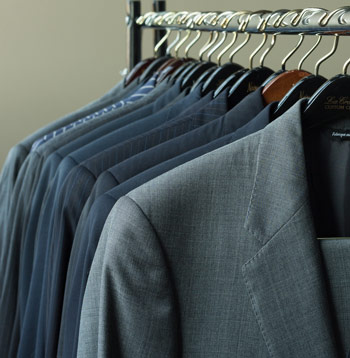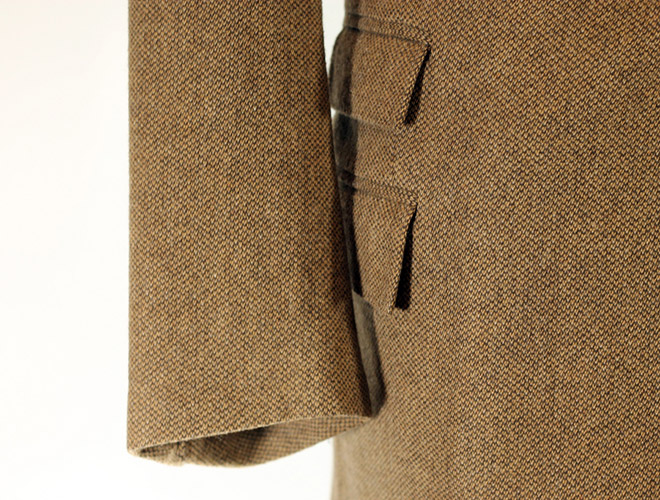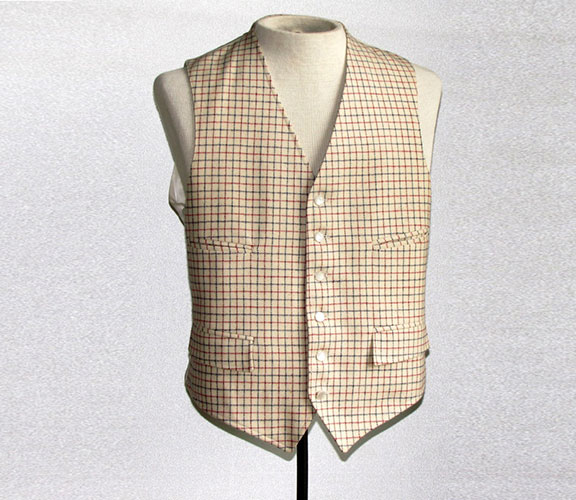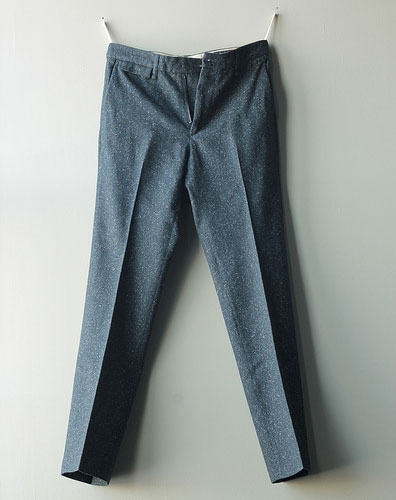My recent article about wearing a suit as separates garnered several comments that inspired the one you’re reading today.
I’m all about understanding the rules, internalizing them, and then breaking them in a smart, calculated, and intentional way. Taking a step back, however, I realized it would be difficult to break the rules if you don’t know what those rules are.

In this article, we’ll break down the general, traditional (traditional being the operative word here) rules of fit and style when it comes to
Whatever applies to suit jackets will also apply to sport coats and blazers. Whatever applies to the suit pants will also apply to dressy trousers.
Once you have a good grasp of how things are traditionally fit and styled, you can then start to deviate a little, depending on your own personal style.
Best of all, you’ll be doing this in an educated way (since you know what’s right and wrong, what’s acceptable and unacceptable).
Let’s get started, shall we?
All about the suit jacket (or sport coat, or blazer)

Body: The jacket should button comfortably without being too tight. Gently tug away from the body where the jacket is buttoned and you should have about an inch of give before you feel the jacket tighten around your body.
Shoulders: The jacket’s shoulder seam (or pad) should end at your shoulder bone. Try the wall test. Focus on your jacket’s shoulders the most; they should fit as well as possible. Shoulders are not easy to alter.
Jacket length: Make sure it covers your ass. Try the knuckle test to determine correct length.
Jacket lapels: While different for everyone, you want to find a jacket with a lapel of moderate width in relation to your size. If you’re husky or broad up top, you’ll need wider lapels. If you’re a slim guy or have a narrower frame, slim lapels will look better on you; overly wide lapels will be disproportionate to your size.
Lapel proportions: Mind your proportions. A smaller guy should be wearing a suit with smaller lapels, smaller collar, slimmer tie. The opposite if you’re taller or larger: wider lapels, wider tie, substantial collar.
Sleeve length: The appropriate sleeve is long enough so that 1/4″ of your
One, two, three button? One button is typically found on more formal jackets (tuxedos). Two buttons, standard, always a safe bet. Three button works decently on taller guys, or guys with longer torsos, but still better to go with a two button. Or, explore the 3-roll-2. Anything more than three buttons, no.
Which buttons to button? Just remember this: Sometimes, Always, Never. Wearing a three button suit? You can button the top button sometimes (it’s your preference), always the middle, never the bottom. Two button suit? Always the top button, never the bottom. One button suit? Always.
Vents: Single center vent is pretty standard on American
All about the pants)
Overall fit: In general, they should drape comfortably and fit more conservatively (i.e. not hug your curves, like denim might) with a straight leg from the knee down to the leg opening.
Waist: The trouser’s waistband should rest at the hip bone, a bit below the navel. Speaking of the waistband, your trousers may have a tabbed waistband (seen here) which is normal. Some may not, which is also normal.
Pleats or no pleats? Pleats are more a matter of utility than anything else, as they help facilitate ease of movement and keep the crease that runs down the center of your pant leg.
A safe bet would be to go without pleats. Most modern pants are meant to be worn below the waist, and pleats can have a weird billowing effect if worn too low. They look best on high-waisted pants.
If you decide to go with pleats, have no more than two on each side.
Cuff or no cuff? If you have pleats, your pants should be cuffed. If you have no pleats, cuffs aren’t recommended, though since they’re a stylistic preference, some men choose to go with cuffs, even without pleated trousers.
Break: A safe bet would be to go with a half break. If you’re looking for a more trend-forward style, no break. A classic look would be a full break. Details and photos here. Another good resource here.
All about the waistcoat (or vest)

Length: Your waistcoat should cover your waist with no part of your
Fit: The waistcoat should fit snugly, but not so tight that it is uncomfortable when buttoned.
Fabric: If part of a three piece suit, the fabric will match the suit and most likely have a satiny, shiny back. If an odd vest, the more texture, the better. Think tweed, corduroy, and wool. Ideally, these odd vests have a non-shiny back.
How many buttons? Typically five, though it’s not uncommon to see up to eight buttons depending on the style of the waistcoat.
Which ones should be buttoned? Leave the bottom button undone, similar to your suit jacket. This helps prevent the waistcoat from riding up the torso.
Common rules to break (for style, duh)
If you’re a style beginner and still working on understanding the rules of dress, it’s important to abide by them. They’re in place for a reason, after all… like when you were a wee little lad (or lass) and your mother told you to never touch a hot stove.
However, if you’re already comfortable with and have a good understanding of the rules, you can start experimenting and deviating from them in order to shape your own personal style.
When in formal situations, it’s best to not deviate from the rules. But when it comes to more relaxed situations, it’s your opportunity to experiment a bit. I’m not saying it’s okay to start wearing your pants and shirts backwards, but there is a reasonable amount of leeway you have for experimentation here.
Some rules to consider breaking:
- Appropriate sleeve length: When wearing a suit jacket, the standard is to have 1/4” of your
shirt cuff showing. Any more than an inch showing and it starts to look like your jacket sleeves are too short. I personally prefer about 1/2” – 3/4″ ofshirt cuff showing. - Pants rise: Most conservative pants closer to my natural waist, my torso appears abnormally short, which isn’t the best look. If you have a long torso, you may benefit from a higher rise trouser to balance you out. Here’s a bit more about pants fit, and more specifically, pants rise. Pay particular attention to the photos of Michael Phelps, though I will understand if you stare at Olivia and Zooey longer.
- Trouser break: Traditionally, pants. Here are some visual references once again.
If you’re already comfortable with and have a good understanding of the rules, you can start experimenting and deviating from them in order to shape your own personal style.
Rules that should not be broken
- Buttoning the bottom button of a suit jacket: Always follow the “Sometimes, Always, Never” rule mentioned above (a longer explanation here). This isn’t a rule to experiment with, because when you button the bottom button, it messes with the fit and drape of the jacket.
- Shoulder pads extending past your actual shoulder: This is a sign of poor fit, and when the shoulders of the jacket extend past your actual shoulder, the jacket is too big. Again, the point is to look good. Perfect fit is essential to looking good.
- More than three buttons on a single-breasted suit: Unless you’re an NBA star from the late 90s to early 2000s. It’s not flattering on anyone, no matter how tall you are. Stick to three buttons or less, with two buttons being the optimal choice.
- More than two pleats on trousers: Some guys need pleats, and that’s understandable. If you don’t need them, don’t wear them. If you do need them, make it a max of two per leg, please.
Is this helpful?
What other traditional rules have you followed in the past? Did you end up keeping or breaking these rules to shape your own personal style?
All photos via menswear market

